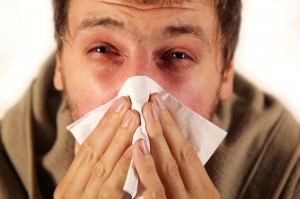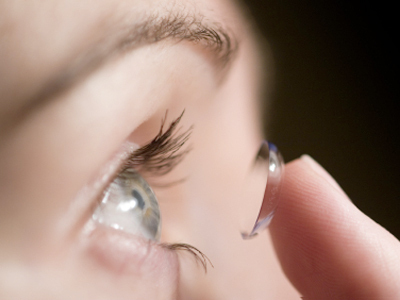 Eye allergies, or allergic conjunctivitis, develop when the body’s immune system reacts to an allergen that gets into the eyes. This is worse on windy days because the environmental irritants are blowing all over the place. There are mast cells under the upper eyelid. The allergens cause the mast cells to release histamine and other substances or chemicals that cause blood vessels in the eyes to swell and itch.
Eye allergies, or allergic conjunctivitis, develop when the body’s immune system reacts to an allergen that gets into the eyes. This is worse on windy days because the environmental irritants are blowing all over the place. There are mast cells under the upper eyelid. The allergens cause the mast cells to release histamine and other substances or chemicals that cause blood vessels in the eyes to swell and itch.
Although allergic conjunctivitis can’t harm your vision, it can be extremely uncomfortable, annoying and disruptive. You may become intolerant to wearing your contact lenses due to the swelling and discharge. The best way to treat your eyes for allergies is to avoid the allergens that trigger your symptoms. The most common outdoor allergens include grass, trees and weed pollens. Indoor allergens include pet hair/dander, dust mites and mold.
Complete avoidance is impossible, so treatment may be indicated. Many sufferers choose to treat their symptoms with over-the-counter allergy medication. Unfortunately, antihistamine tablets and nasal sprays commonly used for allergies are not designed to relieve eye symptoms; in fact, 73% of patients who take oral or nasal allergy medication still suffer from itchy, red eyes. Clinical research has shown that these antihistamines can cause drying of the eyes, resulting in a reduction of tear flow of up to 50%. This means there is the potential for symptoms to be more severe and longer in duration because pollens aren’t rinsed as quickly from the eyes and may accumulate.
Over-the-counter eye drops may provide some relief, but many consist of a short-acting vasoconstrictor with an antihistamine, which result in a short duration of action (usually 2 hours) and a masking of the redness rather than a treatment of the cause. There are combination drops which treat the mast cells and inhibit the histamine. To work properly, correct usage is required.
Additionally, self-diagnosis and treatment can make other conditions such as an eye infection or dry eyes worse as some of the symptoms are the same.
Contact lens wearers may suffer added discomfort because allergens can get on the lenses, and can also cause the eye to produce excessive amounts of discharge that adhere to the contact lenses too. Clinical studies have shown that contact lens wearers suffering from allergic conjunctivitis who used prescription eye drops before inserting their lenses had significantly greater comfort. Call to make an appointment at the first hint of allergies. Treating the condition sooner results in faster and less complicated relief.
For temporary relief before you can get an eye examination, use a cold compress ( a clean washcloth with ice cubes) over the eyes for ten minutes. An artificial tear or sterile saline solution can remove allergens from the eyes. Chilling the solution adds even greater comfort.

